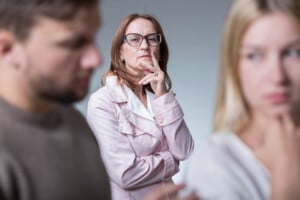If only we had a better understanding of why toddlers do the things they do, we might better deal with their tantrums and odd little behaviors with a lot more patience and understanding. Let’s take a look at some of the typical odd behaviors and things that your toddler might do that make us scratch our heads.
Why does my toddler climb on everything?
Imagine being contained for a year or more, watching people walk and move and climb and observing structures and chairs and staircases, and then suddenly, you have the skills to explore and climb. You would take advantage of that exciting new skill too!
The simple answer is, toddlers climb because they can. It is new and exciting, and it is a thrilling way of exerting their independence while exploring their world. Your toddler has no idea that they can fall off the back of the sofa. It’s just great fun to try to get to the top!
As a baby, the first part of the brain to develop is the brainstem, which is made up of the hindbrain and part of the midbrain. This is at the base of the skull, and it controls involuntary responses such as reflexes, breathing, and heart rate.
The second part of the brain to develop during the first and second year is the midbrain. The midbrain consists of the limbic system, which includes the hypothalamus, amygdala, and hippocampus. These parts of the brain are responsible for controlling thirst, hunger, sleep, moods, perceiving and reacting to emotions, stress reactions, and creating new memories.
The last part of the brain to develop is the forebrain, the part of the brain responsible for higher-level thinking, problem-solving, planning, decision making, logic, and reasoning. Without this higher-level part of the brain, there is a lack of planning, decision-making, and reasoning skills. Toddlers are thinking on an emotional level only. It does not help that their physical development is excelling by leaps and bounds at this point, and their ability to think simply cannot keep up. So toddlers are literally running, and they have no idea where, and climbing, and they have no idea why.
At the same time, toddlers learn by repetition . . . a lot of repetition! So, if climbing onto the countertop was fun once, it will be fun over and over again.
How to handle this: Keep a close eye on your climbing toddler. Not all toddlers climb, but those who do need to be observed. Take the time to teach him how to get down. Demonstrate going down steps backward and showing her where to put her feet and hands when climbing down from something. If you have a “climber,” provide as much outdoor play and safe climbing experiences as possible. They are learning, exploring, and getting stronger and more coordinated, after all.
Why did my toddler stop taking naps even though he is still tired?
Most 18-month-olds still need two naps per day as they are typically very active and need time to rejuvenate. There is just too much to do! Your toddler’s brain activity and physical activity are at an all-time high, and he just wants to go and explore and play. He simply doesn’t have time for sleep. He would much rather play in his bed, sneak out of bed, wander around the house, or play in his room. Your toddler still needs those naps, but he doesn’t know that. Usually, by the time babies can walk and considered toddlers, they are on an adult sleeping rhythm, meaning their sleep cycles are getting closer to 90-minutes versus the 30-minute cycles babies have. This transition can be difficult for some children.
How to handle this: Consistency is key. Try to keep nap time at the same time every day. Even if your baby doesn’t sleep, insist that she have some rest time in the middle of the day. Insist that she lies in her bed and does not play or talk. Give him lots of opportunities to expend his energy during playtime. In other words, tire your toddler out, so he is more likely to be tired at nap time. Maybe you lie down with your toddler. After all, running after a toddler is exhausting work. You could probably use a little break. It is also important to make sure that your toddler is getting enough sleep at night. If he is getting up too early, try moving his bedtime up an hour. Often. Sleep begets sleep.
Why does my toddler play with her food?
This is simple. Toddlers don’t know it’s food! They know it is supposed to go in their mouth, but so what? They put everything in their mouth! The bright orange of sweet potatoes, green of avocados, and light yellow of bananas are beautiful when smooshed into each other on a highchair tray. Babies are born with a natural sense of curiosity and wonder. They love to explore their world and experiment and touch everything. And food is the perfect medium.
Toddlers also love different textures. Exploring textures and how things feel against their skin is a great sensory activity to learn about the world and build those important connections or synapses between brain cells or neurons. They build these meaningful new connections through experiences, and they are wired to seek out these interesting experiences. When babies are adequately stimulated, their brain triples in weight by their third birthday. This is due to so many new connections in their brains. Toddlers are just taking advantage of the materials at their disposal to learn about the world they live in.
How to handle this: Let them play with their food and try to look past the mess. Maybe put a splat mat on the floor under the high chair and plan bath time after dinner. Allowing them to play and explore is important for their development. Don’t worry, some of it will end up in their mouth.
Most of what toddlers do is dictated by their immature reasoning abilities and quest to explore. Our job as parents is to provide experiences and keep them safe!



































